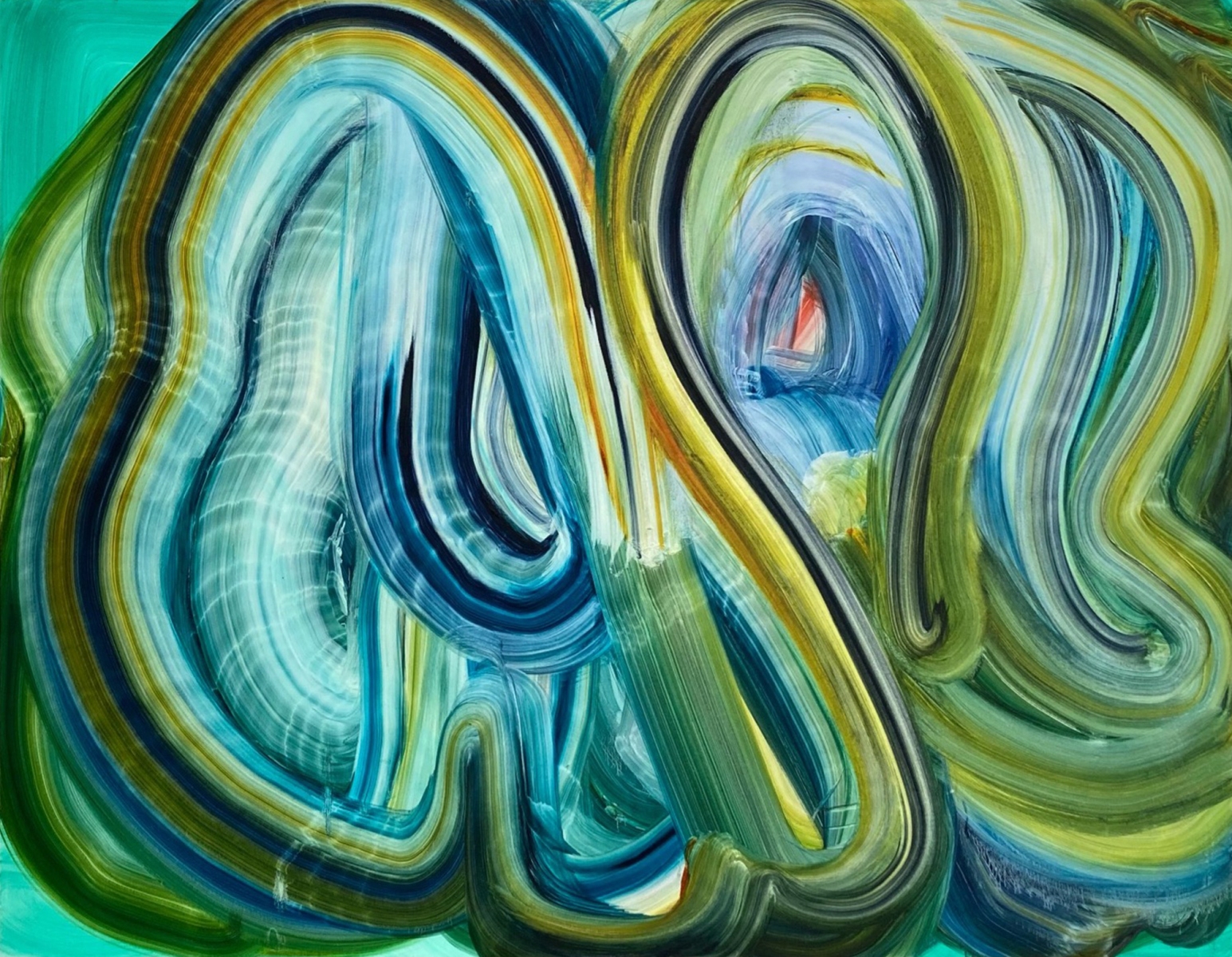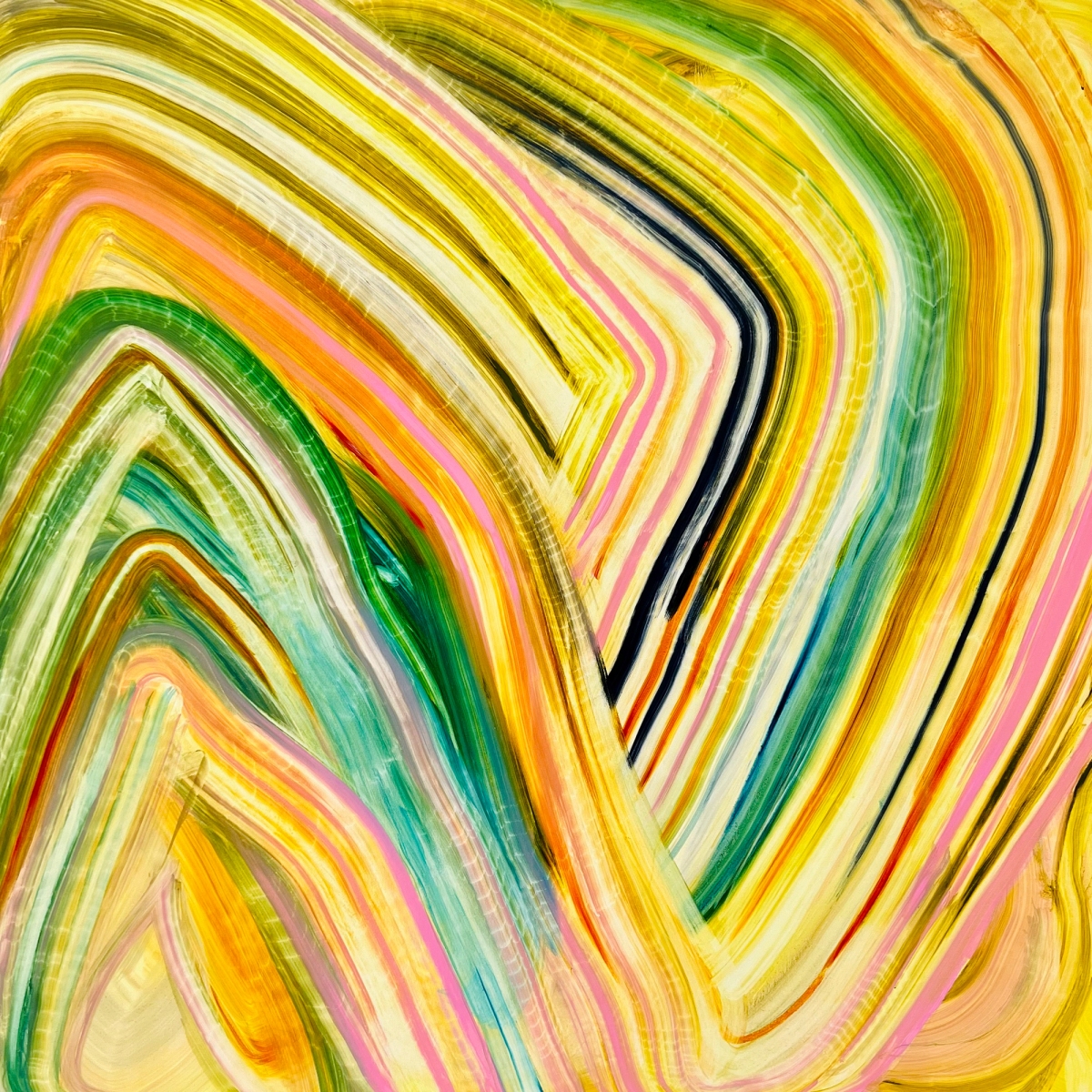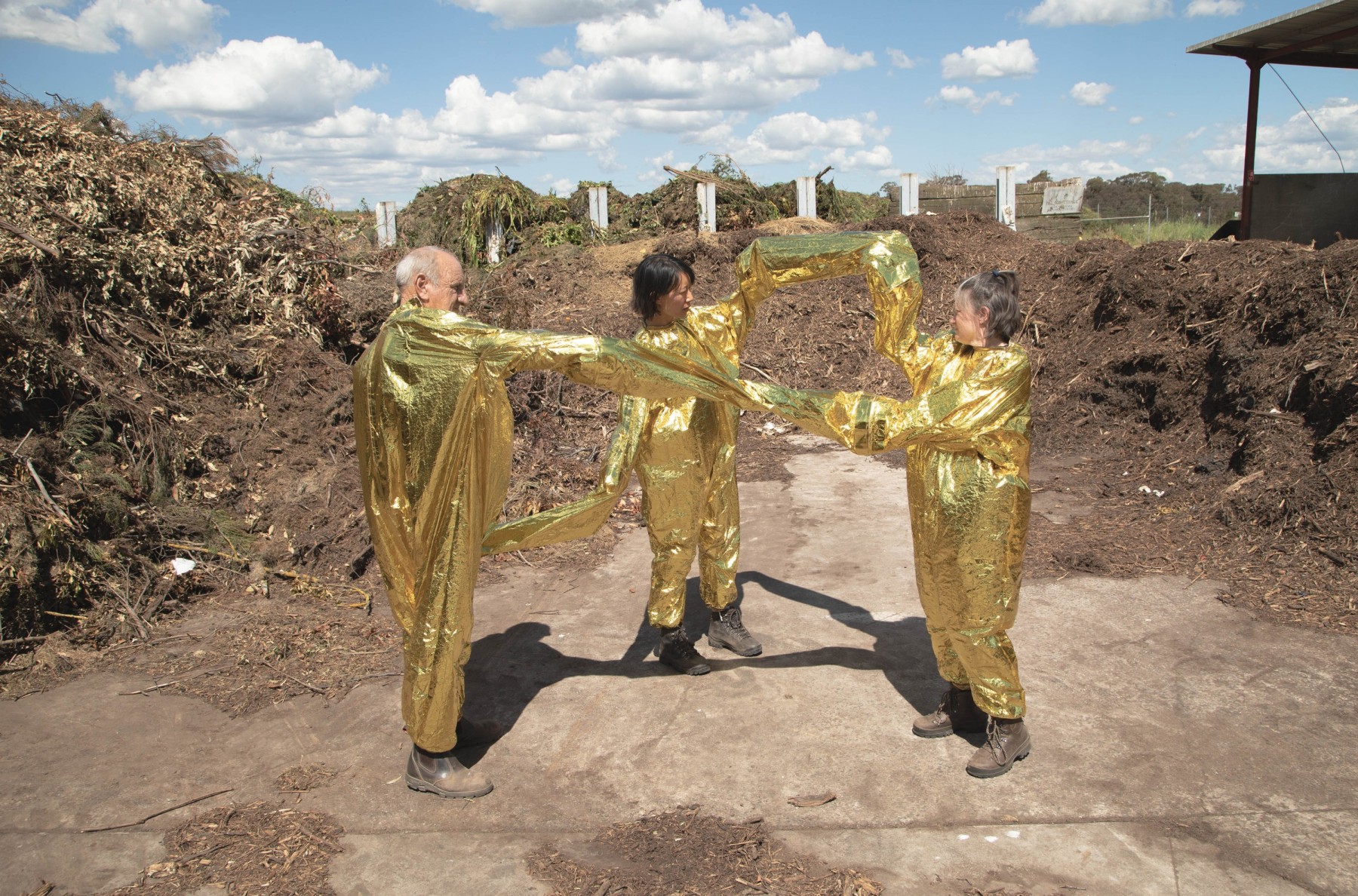There is a sense of place in each of Fran O’Neill’s new works. It’s not a literal sense—these are abstract paintings—but maybe a feeling.
Emerald Journey puts me in mind of an aquarium tunnel, encased by water with sunlight pushing through the blues. Other works might hint at gemstones, familiar rock formations, moody skies, but there’s never enough information to make it a clear representation. It’s up to you to determine what you see, and if you see anything at all.
Feelings of space and light are unsurprising here, as the exhibition, Strides at TWFineArt, is somewhat of a homecoming for Wangaratta-born O’Neill. She created these works after moving back to Australia just before the pandemic, following 20 years in New York.
These are mostly very large works, just eight of them comfortably occupying the considerable gallery space. Gliding lines of oil paint tangle and collide.
Most of the compositions (such as Mysterious Ways) are contained within the frame of the canvas. In these, there is a depth akin to a portal, leading us deep into the spaces between the overlapping marks. Other compositions, like My Memory and Currently Untitled, are not constrained by the canvas. These become portals in themselves that allow you to imagine a much, much larger compositional world, of which the painting is just a fragment. Only in one work, Water Shallows, do I find the surface flat or impenetrable. Whereas the others use the white of the canvas to construct light and volume, this work uses more opaque paint, and the name here suggests a lack of depth may well be intentional. This confirms for me that each work in Strides is its own experiment in palette, form, and movement.
There is definitely movement in these paintings, the scale and flow of the gestural marks clearly relating to actions of the artist’s body. The paintings first appear like simple arrangements of colour and shape, pushed around vast canvases with a large brush. The closer you get, the less true this seems. They are messy. They don’t attempt to present the single flawless brushstroke or perfected squeegee drag that is so popular right now. In fact, O’Neill rarely uses brushes, preferring to push the paint with her gloved arms and fingers.
Associations come to mind of 1950s New York Action Painters and the subsequent waves of artists using the body as a performative tool to paint. Yves Klein’s use of female models as human paintbrushes would be one. Perhaps more palatable is Carolee Schneemann’s kinetic paintings, wherein the artist was suspended in a harness and hovered above her painting surfaces. Just as these artists used their (bodily) process to dictate their mark-making, it feels that O’Neill is also at once a master of the paint and at its mercy.
This contradiction of confidence and vulnerability permeates Strides. You can see where O’Neill’s hand first made contact and where it faltered, stopped, and pulled away. What I presume are turpentine drips interfere with intense lines of colour. Memories of previous paint layers are embedded in the tooth of the heavily-primed canvas—presumably first, second, third attempts at the painting deemed unsuccessful by the artist and wiped back but not completely erased—and now form the foundation for each finished piece. All these imperfect traces hint at how O’Neill has approached the canvas and worked the paint on its surface. But they are hints only, and unlike the performative works of Schneemann and Klein, there remains magic and mystery to O’Neill’s process.
Fran O’Neill has spent much of her career immersed in the world of New York abstraction: studying, creating, and teaching. Her practice has moved through figuration, a fairly consistent focus on landscape, large and small scale, and several media. The paintings in Strides are monumental examples of major risk-taking mediated by the careful consideration that these years of experimentation and research have informed. There is a distinct confidence in her willingness to be vulnerable, to sit happily with imperfection, work with accidents, and to leave a great deal of herself in the works. Is it too bold to suggest that there may be something of both the American and the Australian in this duality? Regardless, it feels as if O’Neill has hit her stride.
Neither my descriptions nor the best photos can fully describe these works. To understand their scale, mood, movement, surface, colour, harmonies, and flaws, you need to see them up close. I would particularly suggest that students of painting, whether figurative or abstract or anywhere in between, will find both wonder and instruction in the application of their medium here.
Miranda Hine is a Meanjin (Brisbane) based writer, curator and artist. In 2022 Miranda was awarded a Brett Whiteley Travelling Art Scholarship for her painting practice, and she is currently working to integrate her curating and museums research interests with her painting.







